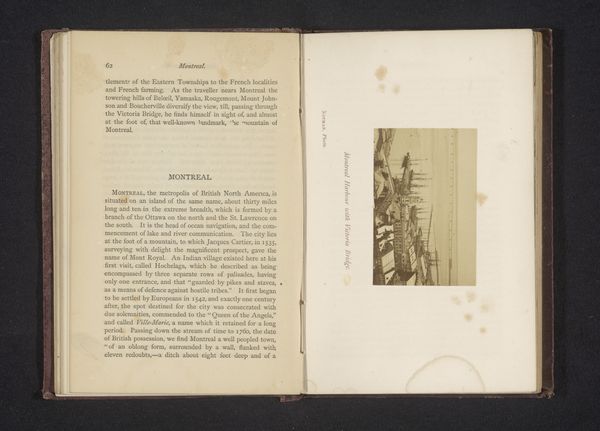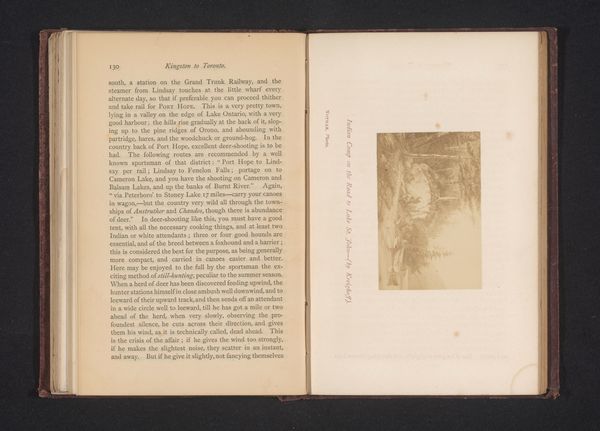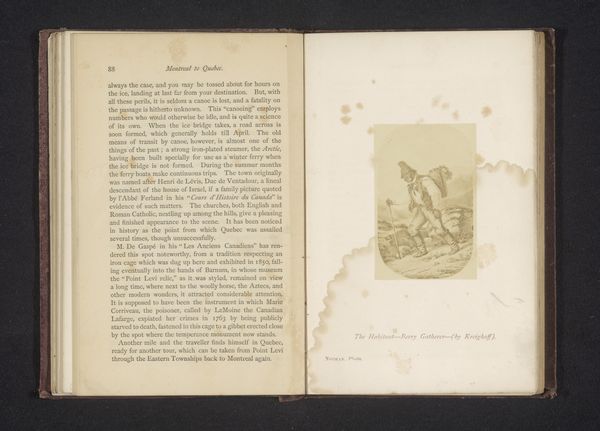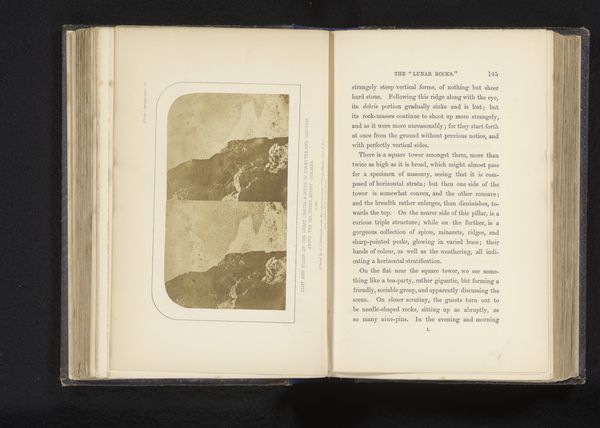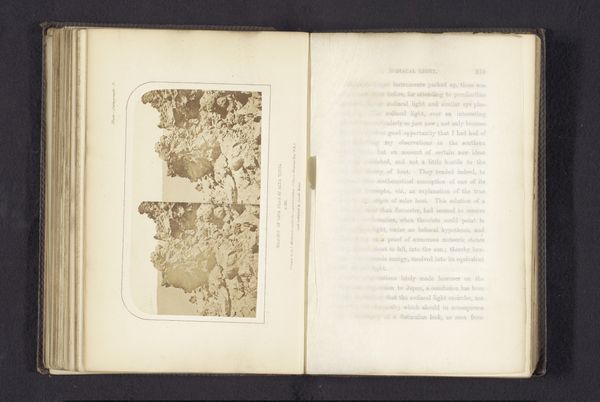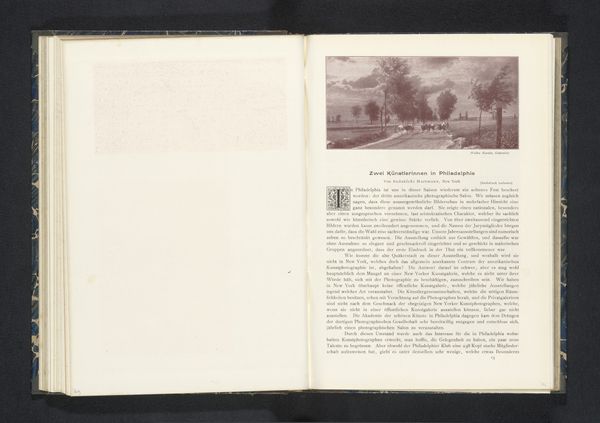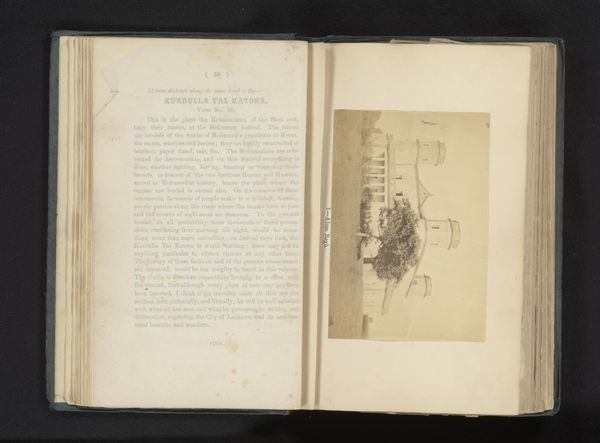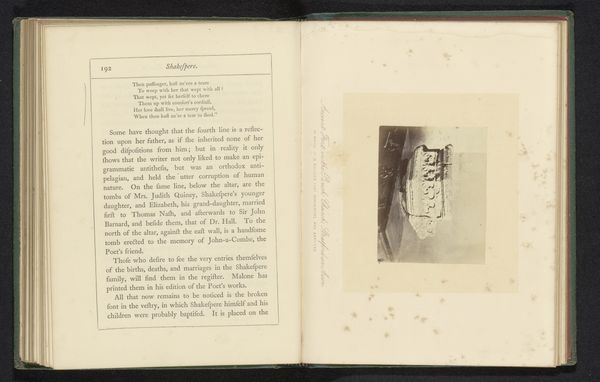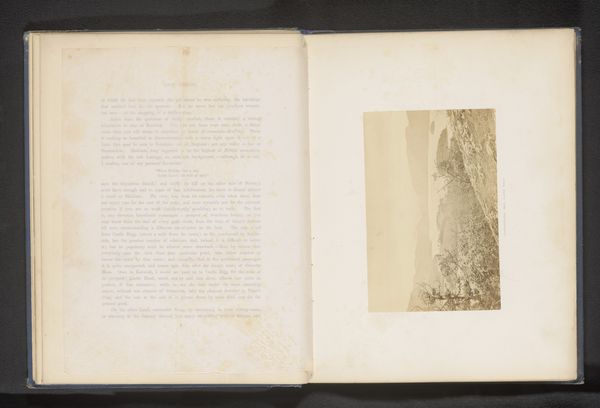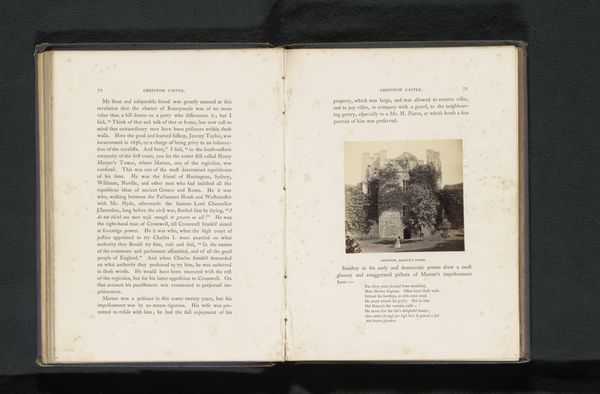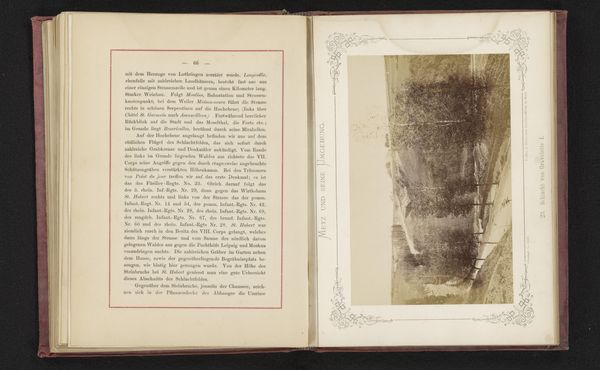
print, photography, albumen-print
# print
#
landscape
#
river
#
photography
#
personal sketchbook
#
journal
#
albumen-print
Dimensions: height 57 mm, width 86 mm
Copyright: Rijks Museum: Open Domain
Curator: We’re looking at “Calm on the Saguenay,” a photographic print by William Notman, dating from before 1866. It’s presented as part of a larger album, appearing on the right-hand page alongside a descriptive text on the left. What strikes you first about it? Editor: The stillness, undoubtedly. The monochrome tones contribute to this profound sense of calm and reflection, mirroring the title, really. There’s also an interesting contrast of textures; the slick flatness of the printed page with the perceived rough surface of the rocks in the photo itself. It invites a tactile experience despite being two-dimensional. Curator: The inclusion of this photograph in a journal or album alongside the text is quite revealing, wouldn’t you say? It was clearly intended for private consumption, allowing for an immersive journey through images and textual narratives. This speaks volumes about the public’s growing fascination with Canadian landscapes. Editor: Precisely. The way Notman captures this Canadian landscape through his chosen tonal range is technically fascinating. The values – darker greens of trees set against paler water create this composition that uses tonal contrast almost exclusively. What is the intended emotional response of this method? Curator: By integrating photographs such as "Calm on the Saguenay" into these journals, there's a creation of personal narratives intertwined with colonial narratives about land and exploration. The sublime tranquility captured also contrasts historical tension with the indigenous communities. It presents the river as both picturesque vista, ripe for 'discovery'. Editor: So the function and experience of the piece is linked to those tensions of exploration, possession, and narration. Thinking about form now, its presentation mimics personal sketchbooks but presents very carefully crafted photographic information to promote its importance. The framing creates a view-portal to this land, offering viewers curated moments rather than full environmental context. Curator: The way we preserve and present that history is fraught, isn't it? The decision to keep the photograph within the album format impacts how we interact and assign importance to it as a fragment within a greater narrative. Editor: Ultimately, appreciating the photographic style, the context and the form allows the modern viewer access a new insight on not only this work but other artistic accounts of that period, even though we can recognize its troubled foundations.
Comments
No comments
Be the first to comment and join the conversation on the ultimate creative platform.
